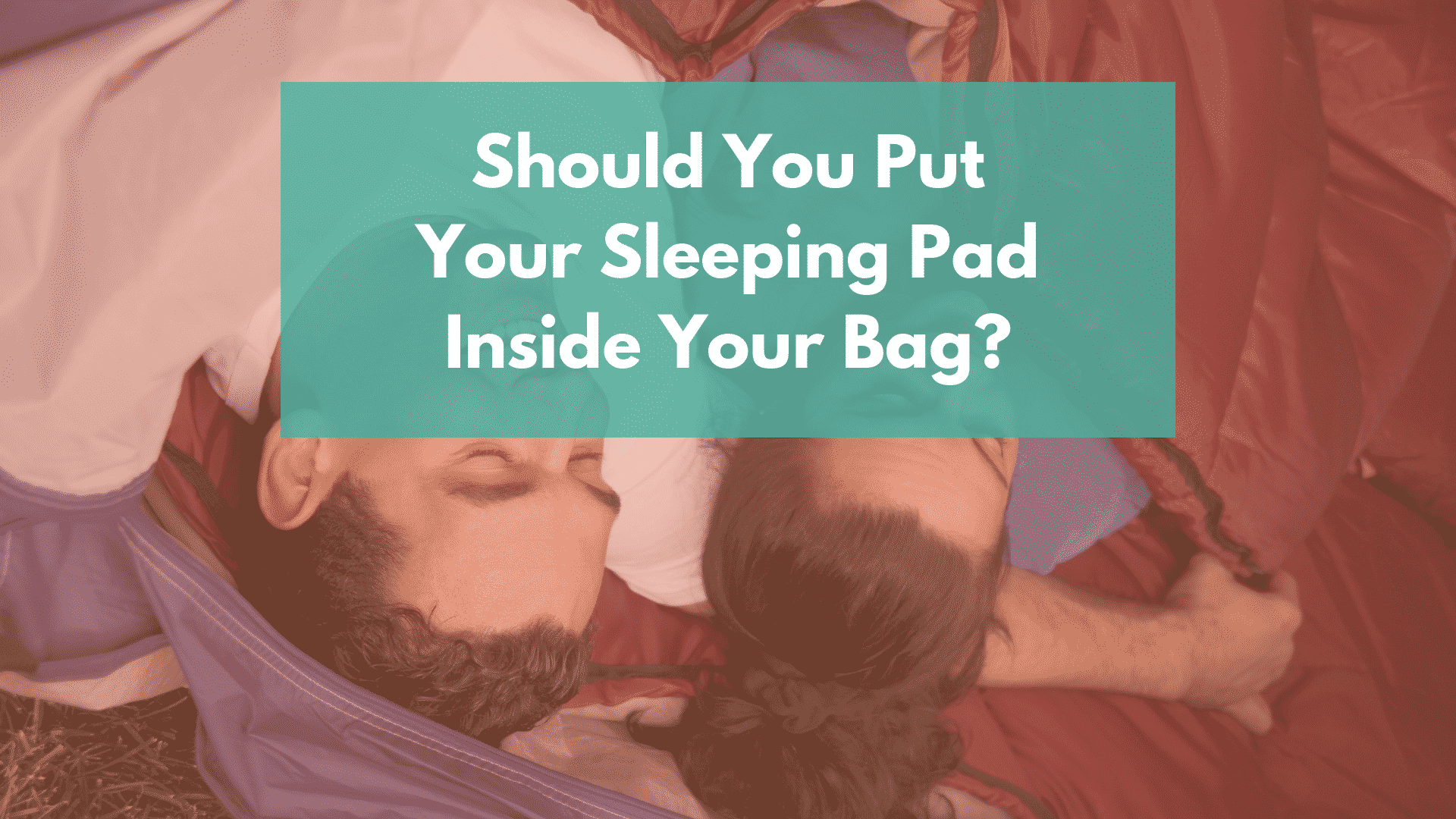After purchasing my first sleeping pad I didn’t know what to do with it. Do you put your sleeping pad inside your sleeping bag or does it get stacked underneath your bag? Unfortunately there’s no right or wrong answer to that question! Some people like the extra room of sleeping on top of the pad and other people prefer the benefits of sleeping with their pad inside their sleeping bag. So why put sleeping pads Inside a sleeping bag?
Should you put a sleeping pad in your sleeping bag? Yes you can put your sleeping pad inside your sleeping bag. Putting your sleeping pad inside your bag will increase warmth, protect the pad, and prevent you from rolling off the pad. Plus it’s much easier to double stack inflatable pads for more comfort. The only downside is you won’t have as much room in the bag which makes it difficult for side sleepers.
Sticking a thick pad in your sleeping bag will definitely stop you from rolling around, but it’s not for everybody. In the rest of this post I’ll explain why it’s better to use your pad inside your sleeping bag and go over a few situations where it may make you colder.
Table Of Contents
Why Put A Sleeping Pad Inside My Sleeping Bag?
Putting a sleeping pad inside your sleeping bag is a personal preference. There’s no right or wrong way to use a sleeping pad. Some people like the extra room of sleeping on top of their pad and others prefer the benefits of sleeping with their sleeping pad inside their bag. Why put your sleeping pad inside your sleeping bag?
- You Won’t Roll Off Your Sleeping Pad: A lot of people have issues staying on their sleeping pad at night. A regular sized sleeping pad is only 20″ wide so bigger guys have a hard time staying on their pad. My arms hang off the sides of every lightweight pad on the market (even larger 25″ pads). I have to go into extra wide pads, before finding one that’s comfortable. Placing my sleeping pad inside my bag allows me to use a smaller pad without worrying about rolling off in the middle of the night.
- It Will Keep You Warmer: Storing your sleeping pad inside your bag will help trap body heat in your bag. Sleeping bags allow air to escape through the compressed bottoms of the bag. Sleeping pads outside your bag also help prevent heat loss, but bringing your pad inside your bag stops heat loss at the source.
- Protects Your Pad: Inflatable and self-inflating sleeping pads are fairly durable, but they’re still air mattresses. You always run the risk of accidentally damaging your sleeping pad. They’re easy to repair with a piece of Tenacious Tape, but it’s always better to avoid punctures. Placing your pad inside your sleeping bag will add another layer of protection to your inflatable pad. You can use a secondary foam pad under your sleeping bag to keep that off the tent floor if you’re using an expensive bag.
- Easier To Double Up Your Pad: It’s easy to stack foam and inflatable pads, but double stacking inflatables can be a challenge. They end up slipping and sliding out from under each other. Storing one of your pads inside your bag and keeping the other one outside will allow you to easily stack multiple inflatable pads together. You can also use an extra sleeping bag to stack up your pads and tie your primary bag to the bottom stack.
Coming from a king sized bed I can never seem to stay on my sleeping pad all night. Considering my Therm-a-Rest pad is only 25 inches wide (which is the large version), it’s no surprise I roll off my pad at night. After years of twisting and turning, and never waking up on my sleeping pad I figured there had to be a better solution.
So I decided to try putting my sleeping pad inside my sleeping bag. Putting your sleeping pad inside your bag will significantly cut down the chances of rolling off your pad.
There are other options you can take like decreasing the air in your pad, going with an extra wide pad, grip tape, etc., but none of those options work as well as placing your sleeping pad inside your sleeping bag. I like to use a Cocoon Sleeping Pad Cover wrapped around my pad to prevent slide offs. It’s basically like a giant pillowcase that wraps around your sleeping pad.
There are a few downsides to placing your pad inside your bag. The biggest problem is you won’t have as much room in your sleeping bag to move around and wear extra layers of clothing. This isn’t a huge deal if you’re a smaller guy, but it can cause problems for bigger guys and side sleepers. There won’t be enough room to lay on your side without contracting the insulation, which will make you colder.
1) You Won’t Roll Off Your Sleeping Pad
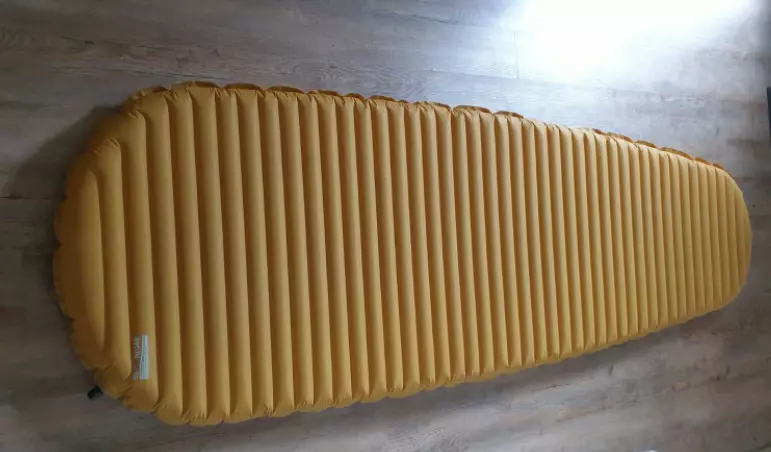
If you put your sleeping pad inside your bag you can’t roll off in the middle of the night. Sleeping pads are surprisingly narrow with standard pads measuring 20″ wide and 72″ long. My arms dangle off of the side of a standard sized pad and I’m constantly sliding and rolling off.
Placing your sleeping pad inside the bag will help keep you on the pad. There isn’t enough room in the bag to roll off and it will keep you centered on the bag. Not having as much room limits the amount of gear you can bring in the bag and can pose a serious problem for side sleepers.
There are a few other ways to help fix roll off issues without bringing your pad inside. You can go with a wider sleeping pad where your arms don’t hang off and reduce the amount of air inside you bag. Most people overinflate their sleeping pad which doesn’t allow your body to sink into the bag.
I recommend completely filling up your pad with air and slowly reducing the air pressure until the pad hugs your body. Your back should sink into the pad until it’s barely above the ground. It depends on your body size/weight, but that’s usually in the 50-70 percent full range. Side sleepers and smaller people will need more air to keep your body up off the ground.
Do You Have Enough Room in Your Bag?

Whether or not you should put your pad in your sleeping bag mainly comes down to space. Do you have enough room to fit your pad inside the bag? Stuffing a thick inflatable pad can be a challenge for bigger guys and side sleepers.
When I was pushing 260lbs it wouldn’t have been possible to sleep with a pad inside my bag. I had too big of a belly to fit comfortably inside the bag. I felt like a burrito all rolled up and unable to move. Throwing on a extra layers in cold weather made it even worse!
My sleeping bag was bursting out at the seams. That wasn’t a huge problem in the summer, but it seriously cut down my bags temperature rating in cold weather. A sleeping bag needs loft in the filling to keep you warm. Jamming your body against the bag compresses the filling. You won’t roll off the pad, but there will definitely be cold spots throughout the bag.
Do You Sleep On Your Back, Stomach, or Side?
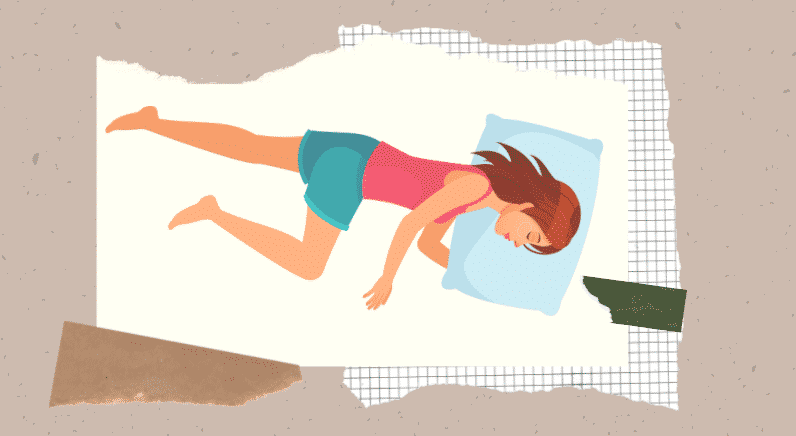
How do you sleep at night? You can only use a sleeping pad inside your bag if you sleep on your back or stomach. Pads take up a lot of space, but you should have enough room to comfortably get a good night sleep.
If you sleep on your side you are going to be out of luck. As a side sleeper, you won’t have enough room between the pad and the top of your bag. Smaller people might be able to squeeze in, but you’ll end up compressing the insulation affecting warmth.
2) It Will Keep You Warmer

Putting your sleeping pad inside your bag should help increase the temperature of your bag. Air is a really bad conductor of heat. Filling that space with an insulated pad will create warm space underneath your body.
Remember that the warmth difference between keeping your pad inside/outside your bag will be minor if you actually stay on the pad. But if you’re like me and roll off your pad immediately there will be a huge difference. Exposing your body to the cold ground will quickly suck away body heat.
There Could Be a Draft
When the sleeping pad is inside your bag there’s going to be air space on both sides of your body. Most sleeping pads are narrower than the average bag. This means that there will be a noticeable draft around your body.
The air will feel warmer than the outside temperature since it’s not that big of a deal, but it’s worth noting. You can avoid this issue by choosing a wider 25″ or 30″+ sleeping pad. Wider pads also help prevent roll offs so you may not even need to store your pad inside the sleeping bag.
3) Protects Air Filled Sleeping Pads
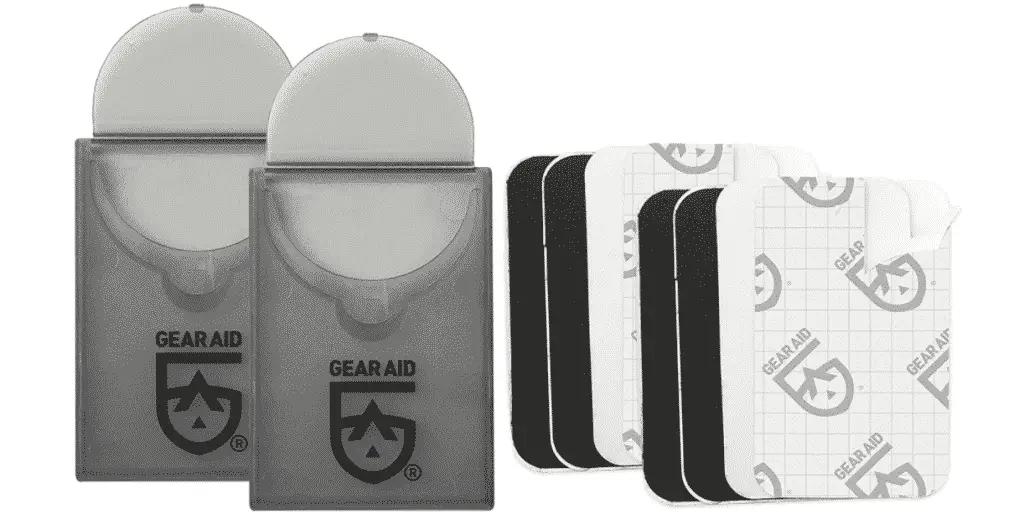
Use an inflatable sleeping bag long enough and you’ll eventually get a puncture. Putting your pad inside the bag will help prevent thorns, sticks, and rocks from poking through your bag. You never know when a puncture will happen so I carry a small gear repair kit in my pack to deal with these situations.
Repairing punctures is easy with a piece of Tenacious Tape, but nobody wants to damage their expensive pad. It’s a piece of peel and stick vinyl patch that you place over the puncture. Tenacious tape works instantly and it can be used on most of your technical gear (not cotton, denim, or natural fabrics).
I also use a durable foam sleeping pad underneath my air filled pad to help prevent damage. It also helps increase your sleeping pads R-Value rating. My cheap Thermarest Ridgerest Foam sleeping pad only weighs 14oz and has 2 R-Value to increase my main pads insulation rating. This allows you to use the same 3-4 R-Value sleeping pad in colder weather.
Tent footprints are another cheap and easy way to prevent sleeping pad punctures. You can get a tent footprint for less than $20 and it doubles as a tarp shelter in rainy weather. Redcamp ultralight tent footprints seem to offer the most value for your dollar.
They’re lightweight and fold up into the palm of your hand for easy packability. Just make sure you go with a tent footprint that’s a few inches smaller than the walls of your tent. Tent footprints are waterproof, so if they stick out past your tent walls you’ll end up with pooling water in the rain.
4) Easier To Double Up Foam Pads
Sleeping pads are fairly comfortable, but they don’t come close to the comfort of a traditional air mattress. Unfortunately, air mattresses don’t have insulation so you’ll shed body heat on cold nights. That’s where doubling up your inflatable sleeping pad comes in.
It’s easy to stack foam and inflatable pads, but doubling up inflatables poses more of a challenge. With a little bit of movement they end up sliding off each other. Keeping your sleeping pad inside your bag will help this issue since fabric is less likely to slide off. You can also use adjustable sleeping pad coupling straps to secure multiple inflatable pads together.
Doubling Up Pads Increases Insulation
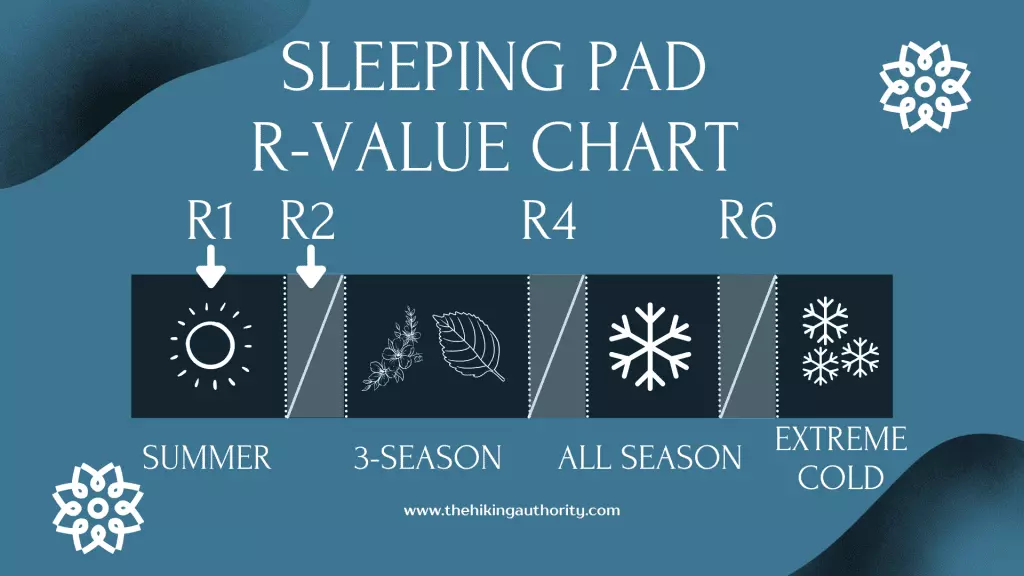
Doubling up your sleeping pads will increase the combined R-Value. Here’s an example: you have a Thermarest Ridgerest Foam Pad (2 R-Value) and Neoair Xlite Ultralight inflatable pad (4.2 R-Value).
Looking at the chart above tells you that neither of the pads would be sufficient for winter camping. The inflatable pad would be close, but you would lose a lot of heat once temperatures drop below 32°. Using both pads together would increase your R-Value to 6.2, which gets you into the extreme cold range below 0°F range.
This will allow you to use the same lightweight 3-Season gear all year round. You won’t have to carry a heavy high R-Value winter sleeping pad in the summer or spend extra money on a 2nd dedicated winter inflatable/self-inflating pad.
All you need is a cheap foam pad (Thermarest Ridgerest) paired with your inflatable pad. Almost every foam camping pad is in the 1.7-2 R-Value range. I use the Ridgerest pad which is a roll up pad, but some people prefer compact folding pads like the ZLite Original (1.7 R-Value) or Zlite Sol (2 R-Value).
